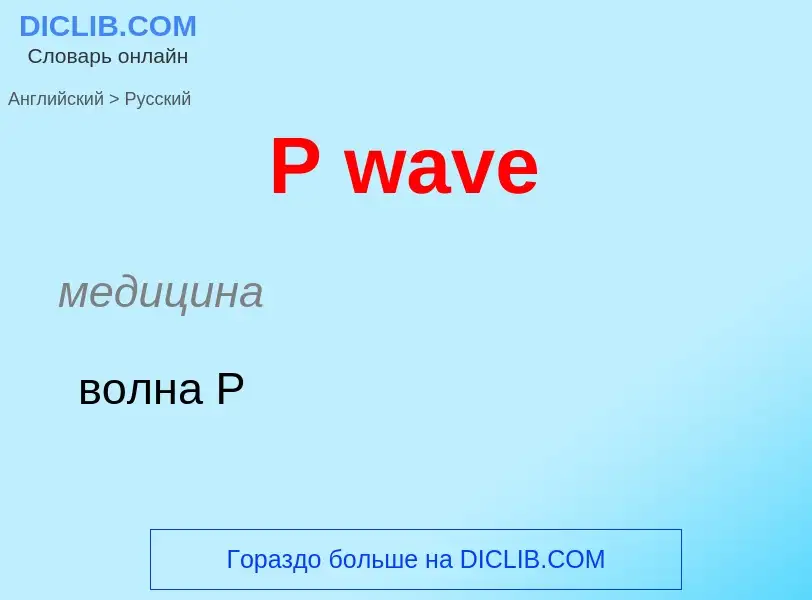Enter a word or phrase in any language 👆
Language:
Translation and analysis of words by ChatGPT artificial intelligence
On this page you can get a detailed analysis of a word or phrase, produced by the best artificial intelligence technology to date:
- how the word is used
- frequency of use
- it is used more often in oral or written speech
- word translation options
- usage examples (several phrases with translation)
- etymology
P wave - translation to English
LONGITUDINAL SEISMIC WAVE
Pressure Wave; Primary wave; P waves; P-waves; P-Wave; P Wave; Pressure waves; P-Waves; P-wave (seismic); Primary waves; P-wave
P wave
<p style="margin-left:40px">медицинаp>
<p style="margin-left:60px">волна Рp>
P-wave
<p style="margin-left:40px">общая лексикаp>
<p style="margin-left:60px">продольная волнаp>
pressure wave
волна сжатия
Definition
Р
восемнадцатая буква современного русского алфавита; несколько видоизменённая буква Р ("рцы") кирилловского алфавита, восходящая к букве ρ греческого унциала. В глаголице - как бы перевёрнутая буква Ь. В кирилловском и глаголическом алфавитах числовое значение 100. Обозначает смычно-дрожащий переднеязычный нёбный согласный [р]. Фонологически различаются палатализованный (мягкий) [р'] (перед буквами "я", "ю", "и", "е", "ь" и в сочетании с последующим мягким согласным) и непалатализованный (твёрдый) [р] (перед буквами "а", "у", "ы", "э", на конце слова и в сочетании с последующим твёрдым согласным).
Wikipedia
P wave

A P wave (primary wave or pressure wave) is one of the two main types of elastic body waves, called seismic waves in seismology. P waves travel faster than other seismic waves and hence are the first signal from an earthquake to arrive at any affected location or at a seismograph. P waves may be transmitted through gases, liquids, or solids.
Examples of use of P wave
1. The signal is part of the primary wave, or P wave, that is the first, though least destructive, wave to arrive after a rupture.
2. Most people experience the P wave, which is a pressure wave that travels through rock like sound through air, as a jolt.
3. This P wave is followed by a secondary wave, or S wave, that shears the ground back and forth and up and down.
4. In the current study, Allen shows that the relationship between P wave frequency and the total magnitude of the quake holds for major quakes, up to magnitude 8 and higher, as well as for medium and small quakes.


